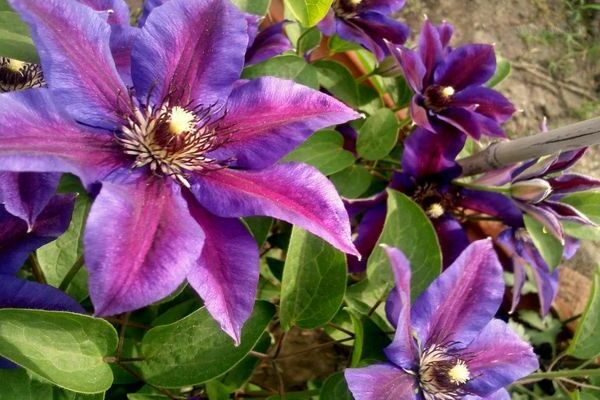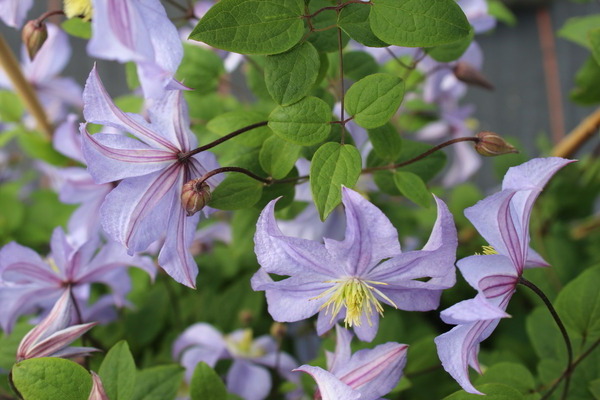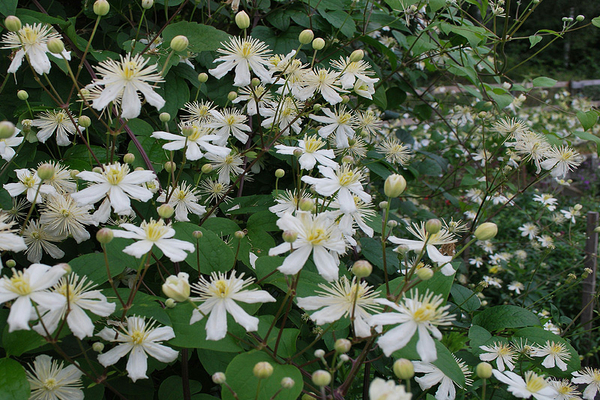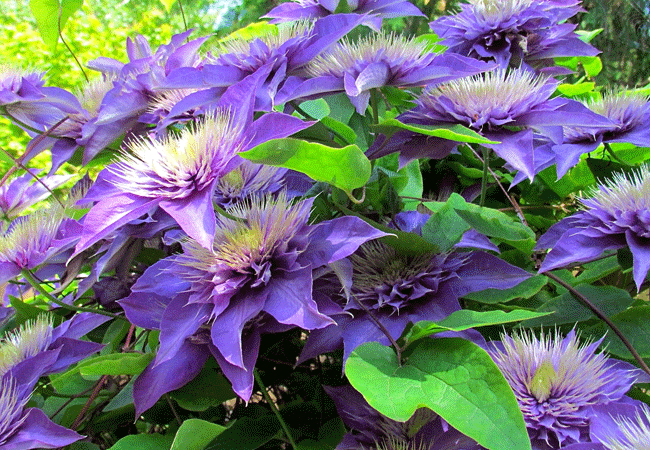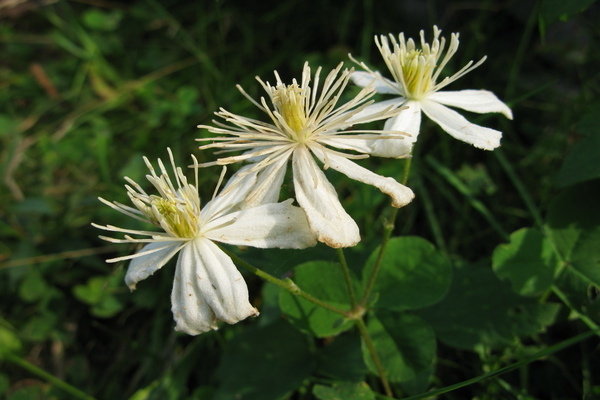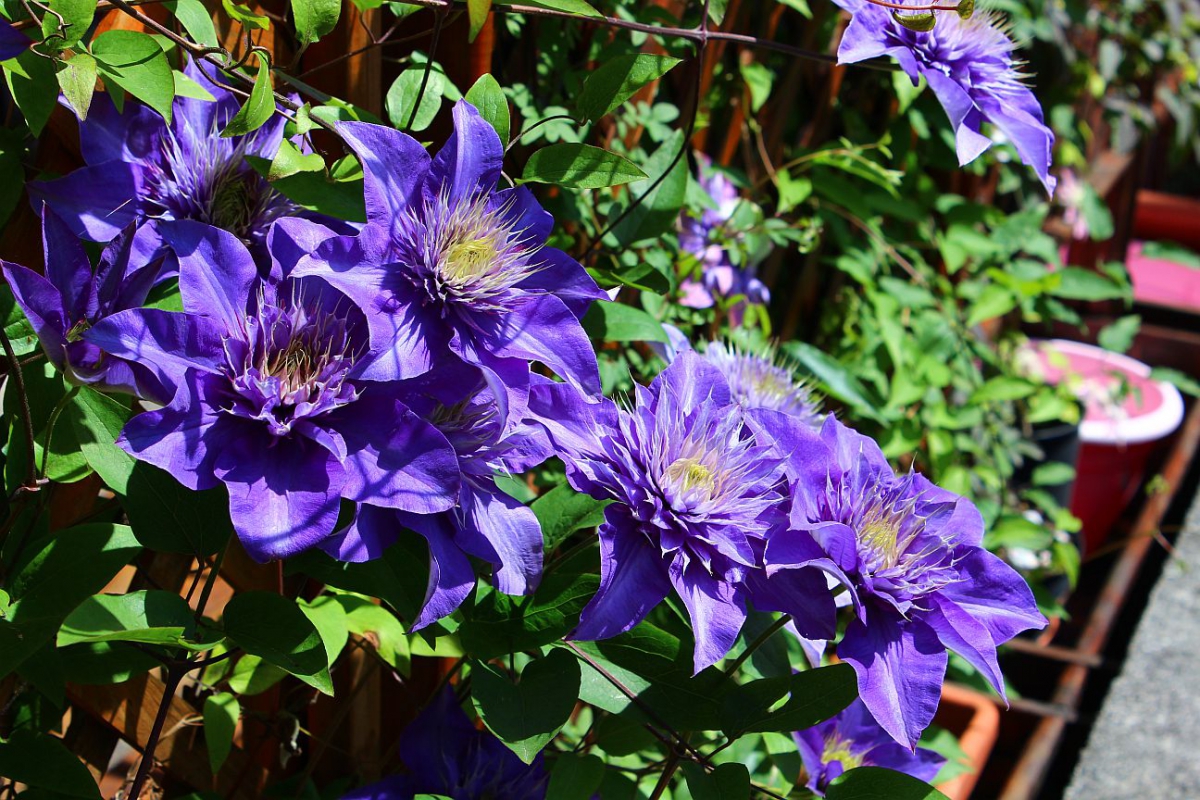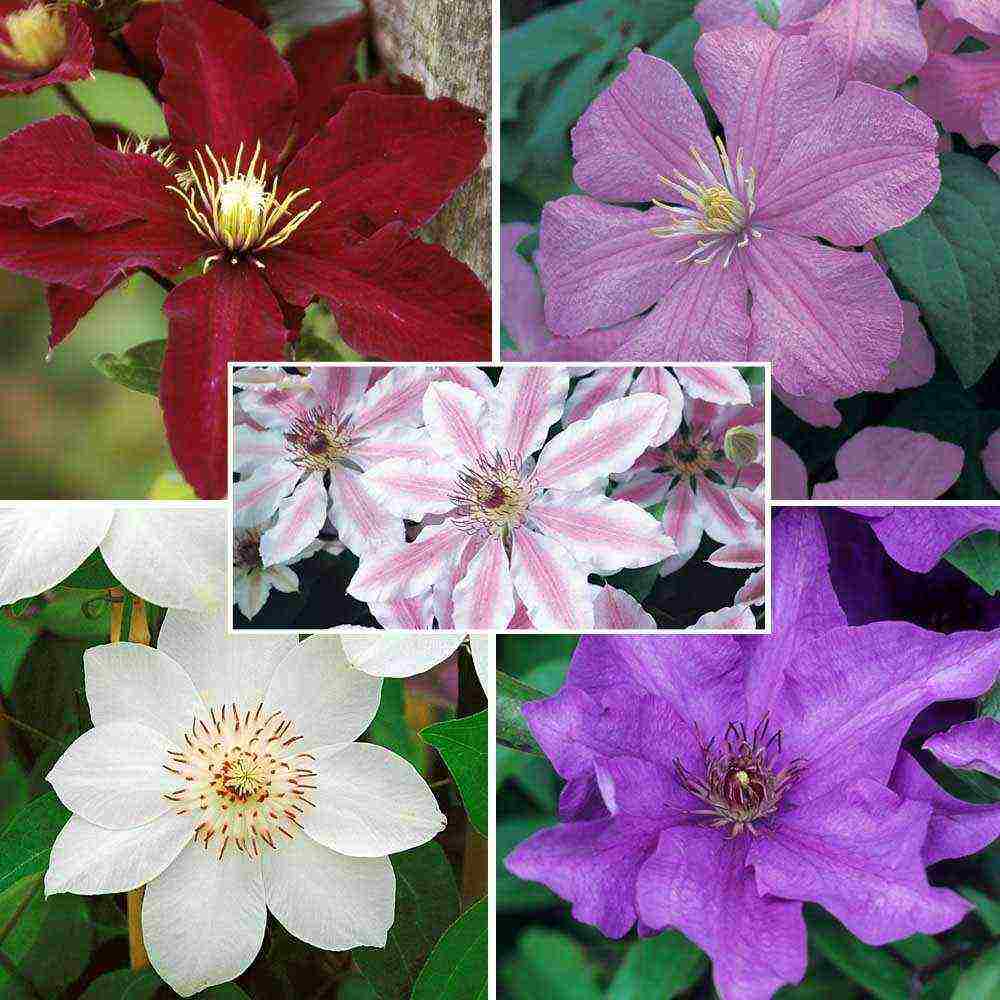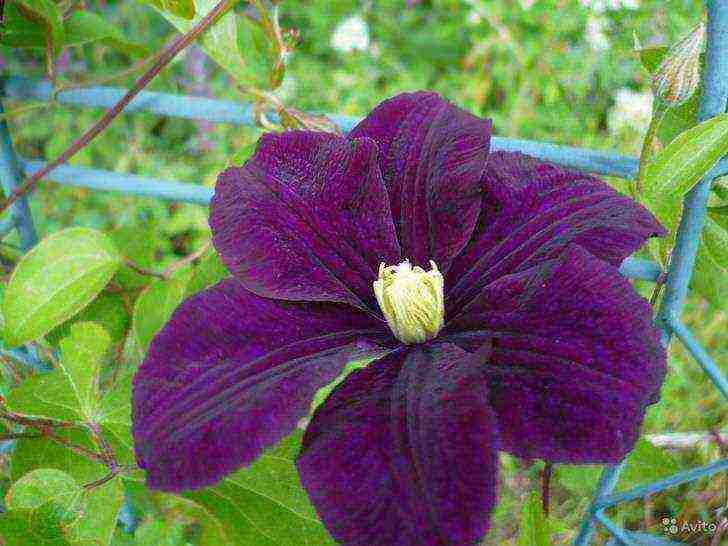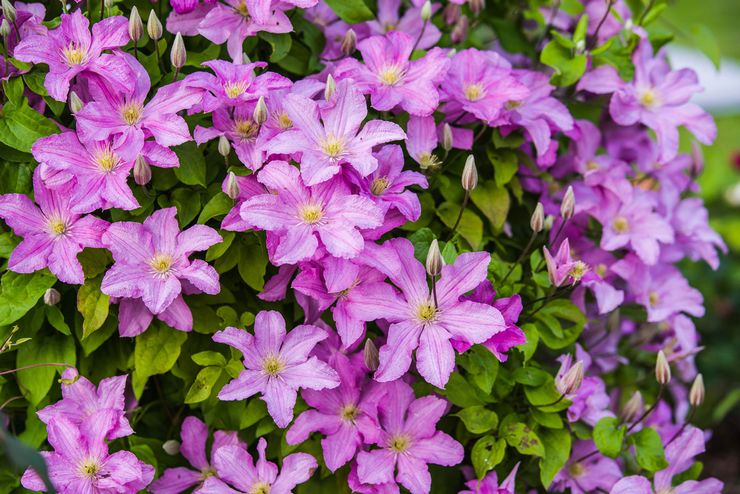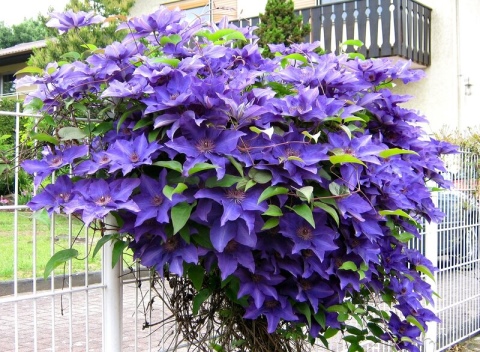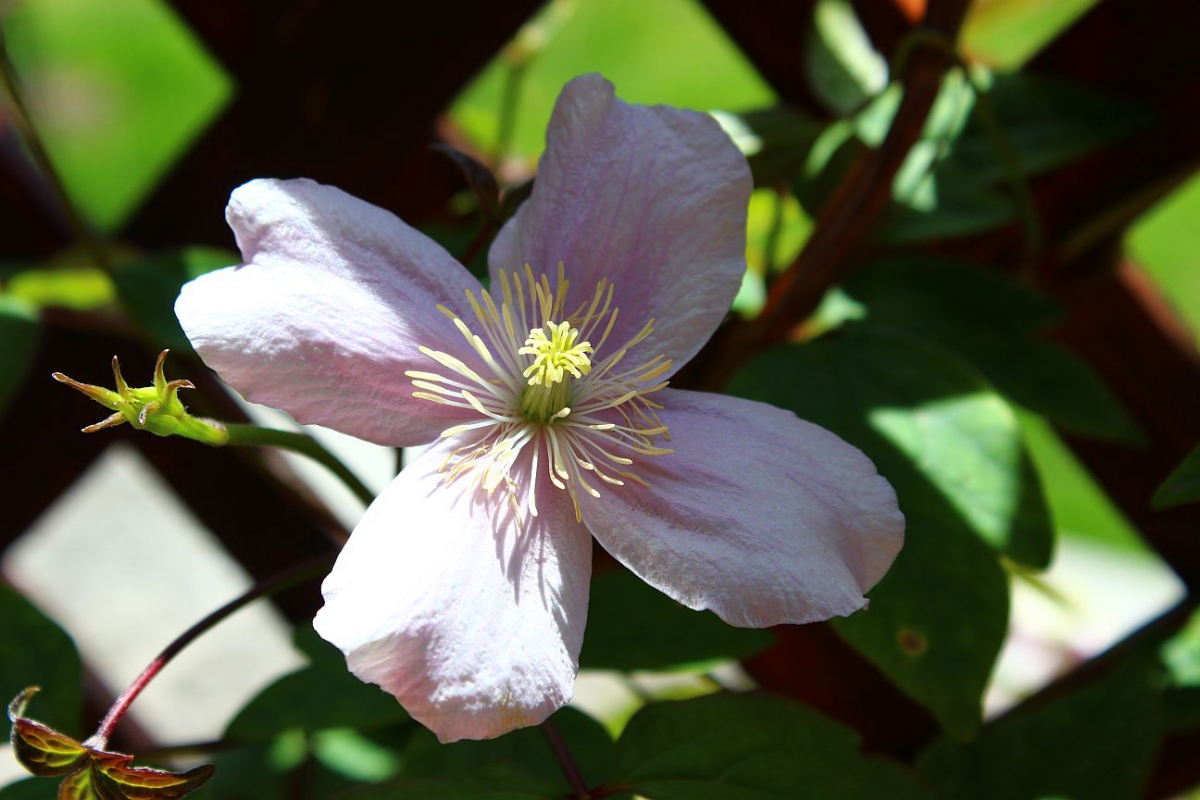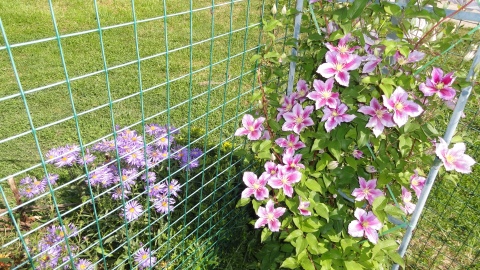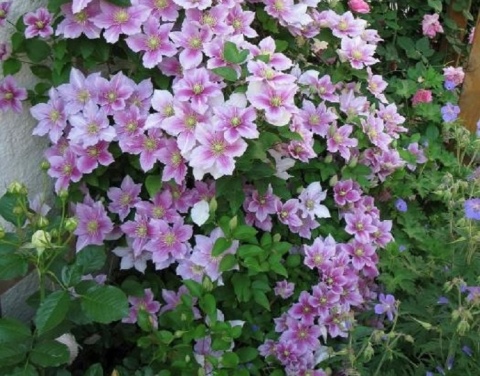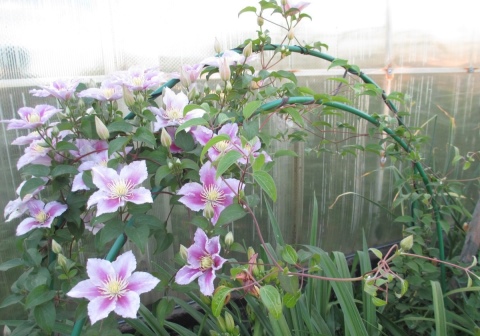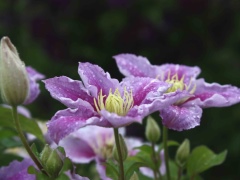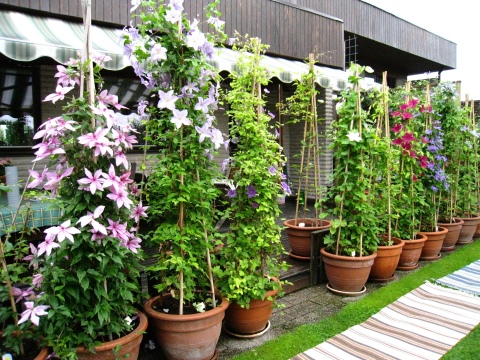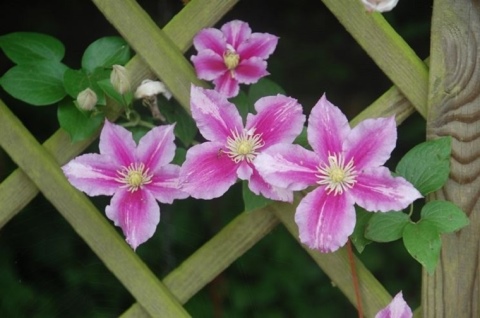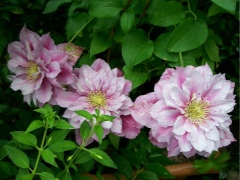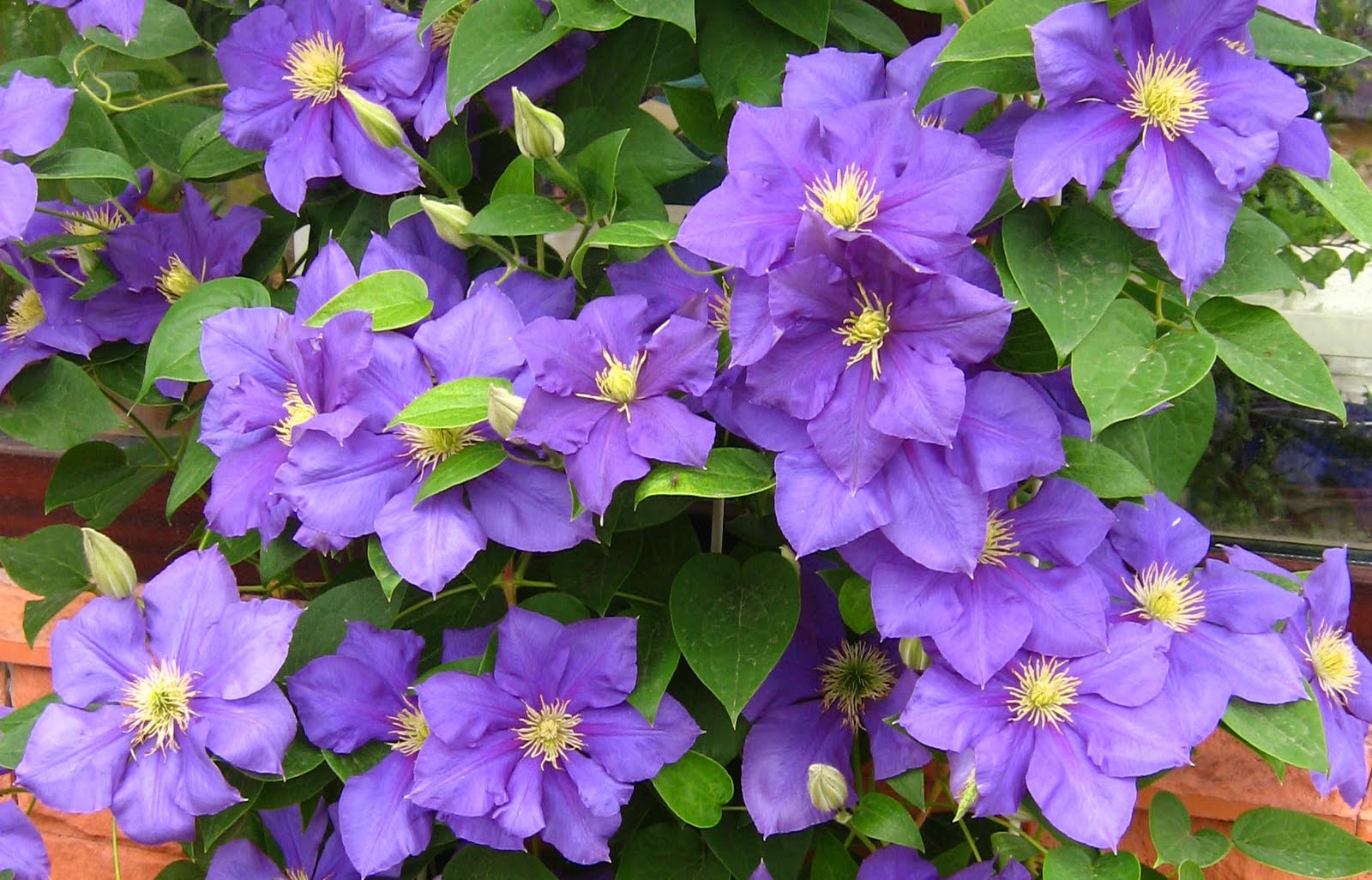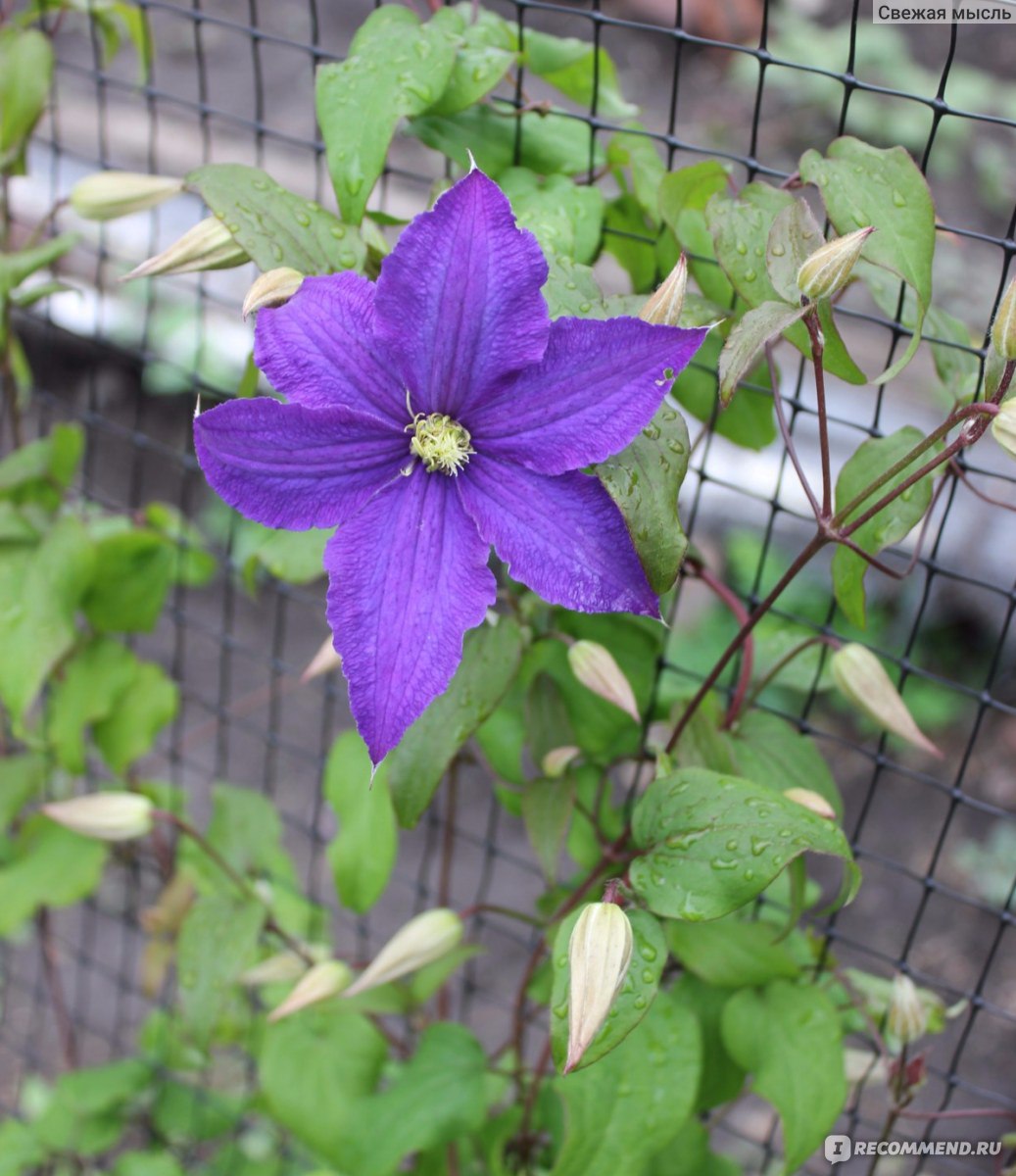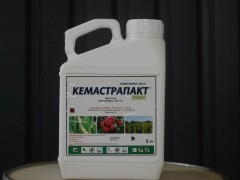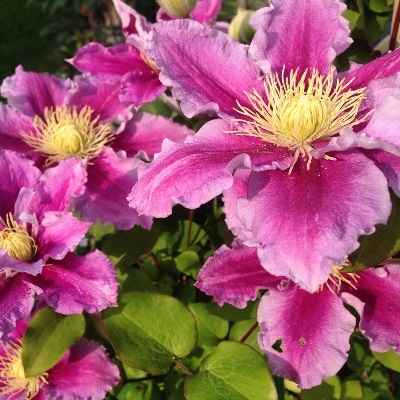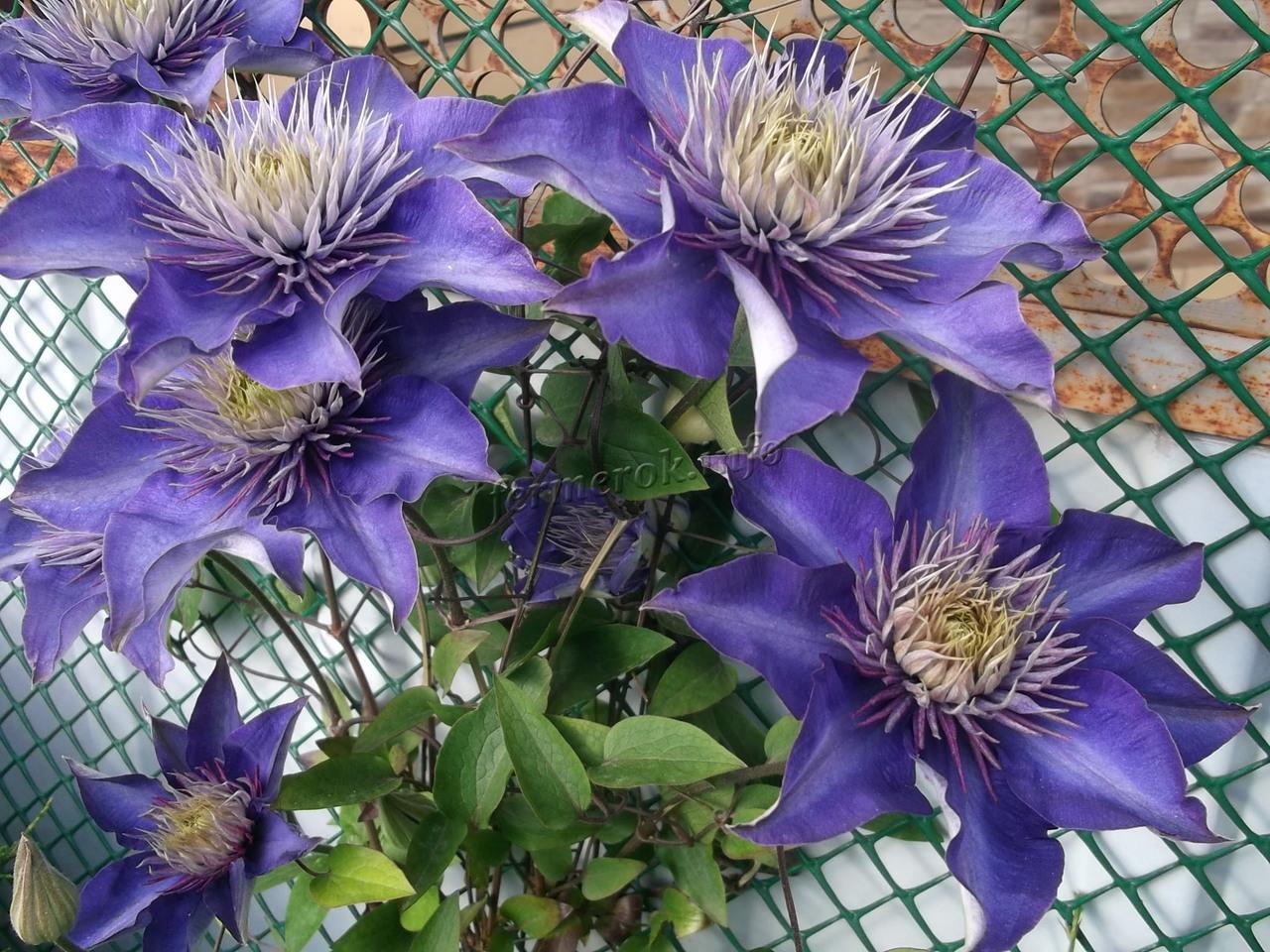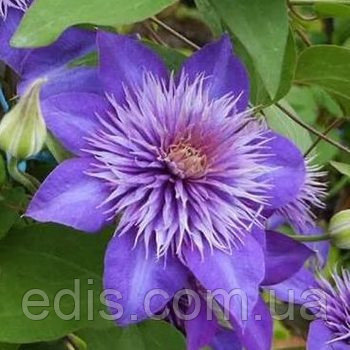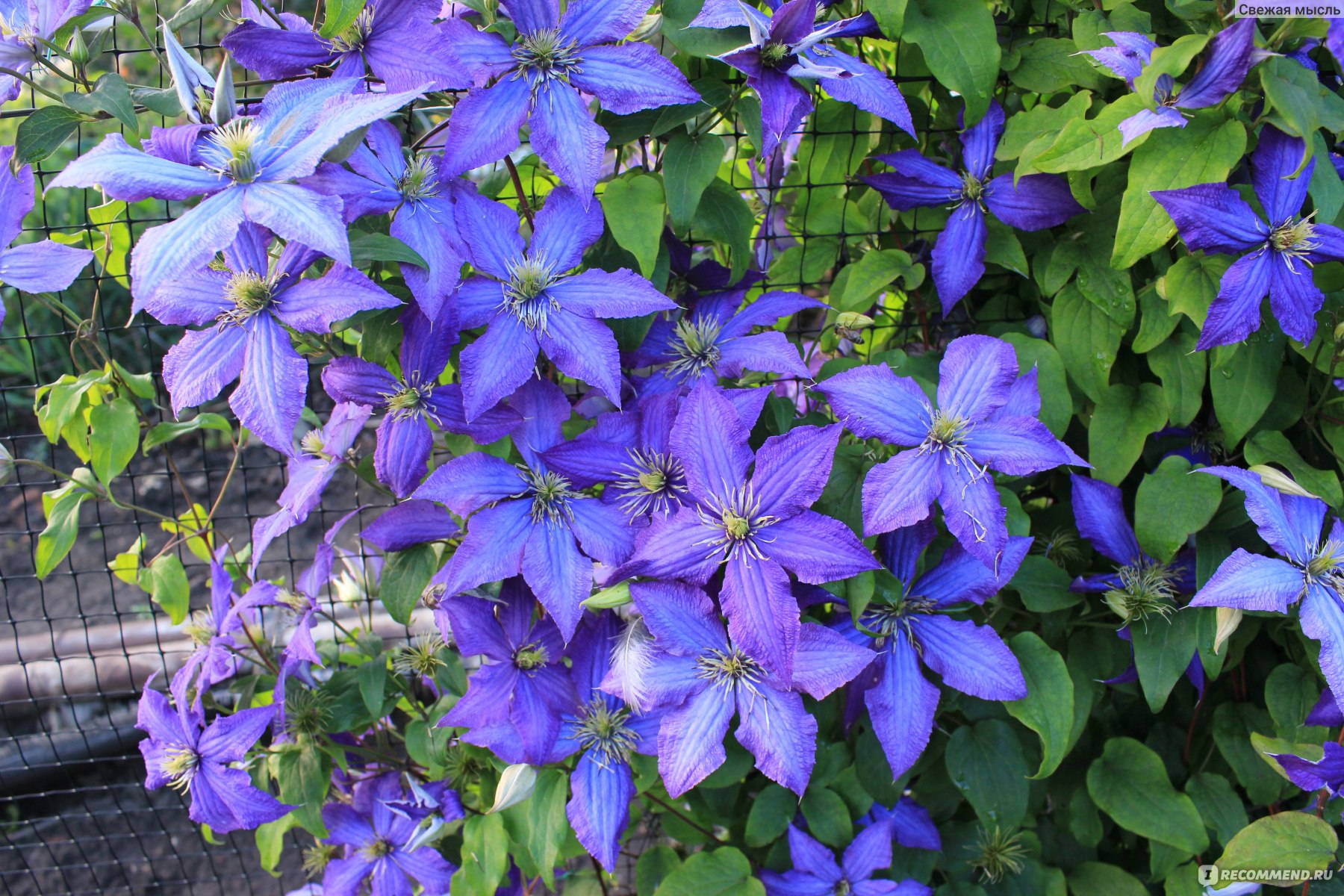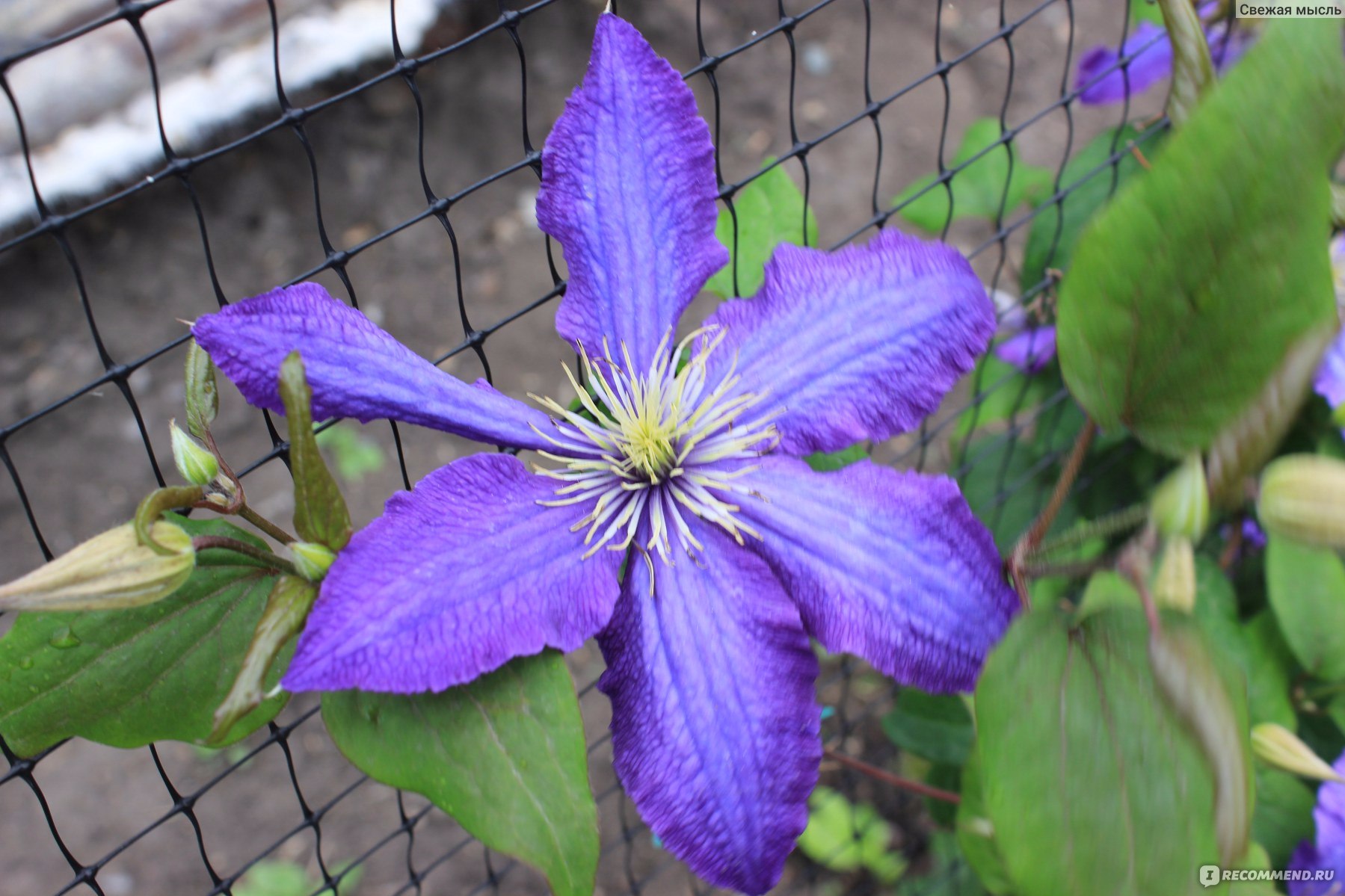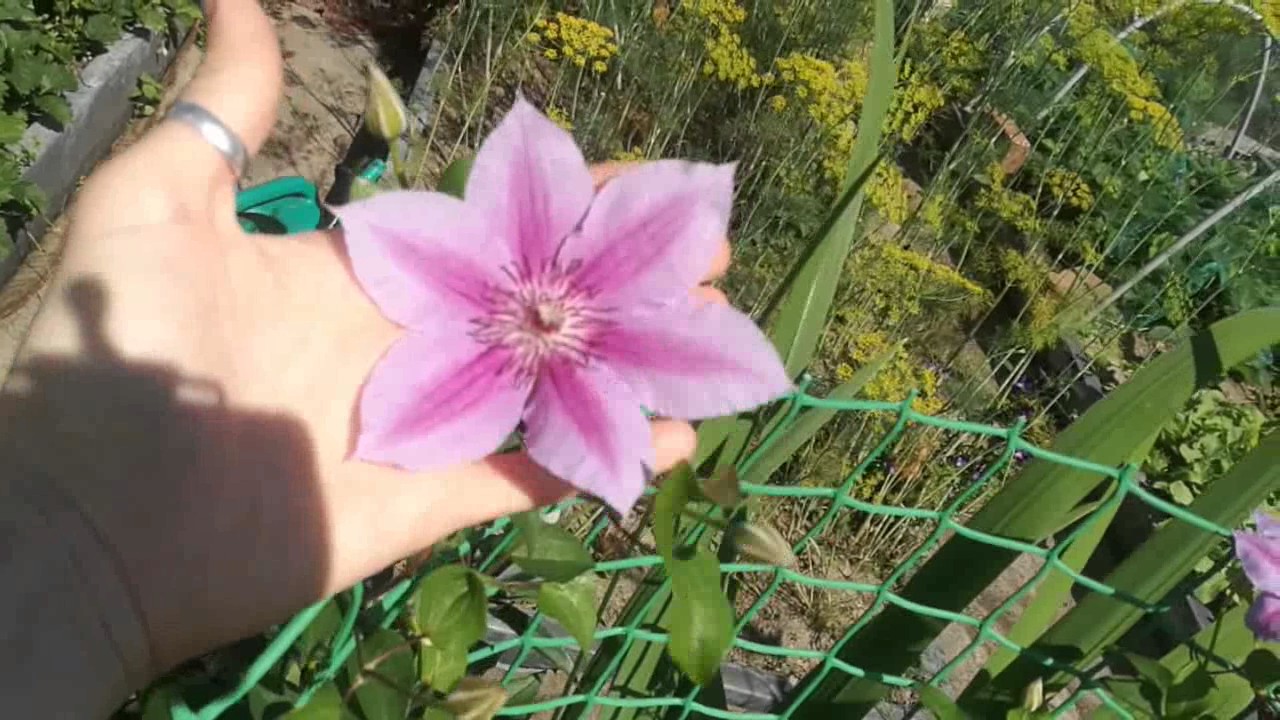Diseases and pests
Clematis have several diseases that appear when the rules of agricultural technology are violated.
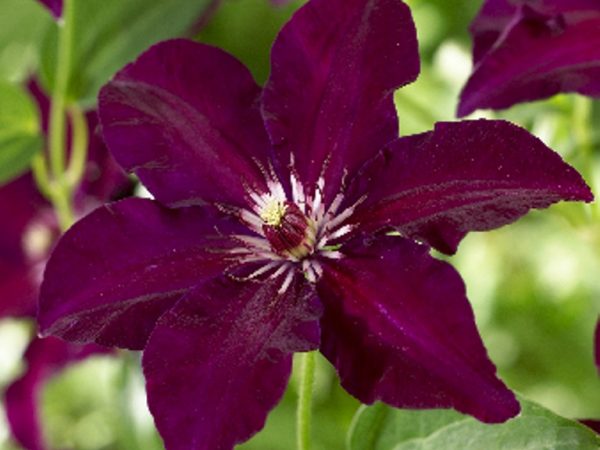
Clematis stasik trimming group
Powdery mildew. It appears as a white coating, similar to flour. The fungal infection spreads to leaves, stems, flowers, later the lesions become oily, darken, die off.
First, it is necessary to cut out diseased organs, then irrigate the crown with Skor, Topaz, Hom or Azocene.
Rust. Brown growths on leaves and shoots are a sign of infection. At an advanced stage, the foliage turns yellow, falls off, the stems droop and dry out. First, all infected parts are cut off, then the crown is irrigated with Ridomil gold, Quadris, Bordeaux liquid or copper sulfate.
Gray rot appears in wet and rainy conditions. Brown spots with a grayish bloom on the foliage are a sure sign of infection with gray rot.
Treatment: cut off all non-viable areas, spray the shrub with Azocene.
Wilt. This disease is incurable. It leads to the rapid wilting of stems, leaves and the death of shrubs. Therefore, a sick clematis is dug up, disposed of, and the place of its growth is disinfected with a fungicide.
Aphids settle in colonies on the inside of the leaves, feed on their sap, as a result, they shrink, turn yellow, dry out and fall off. With a minor invasion, home remedies are used - an infusion of garlic, tobacco, onions, hot pepper, or an ash-and-soap solution. The launched form is treated with Aktellik or Karbofos.
The nematode affects the root system, blocks access to oxygen, moisture and nutrients. As a result, the entire aerial part withers, turns yellow and dries. It is difficult to cure a shrub affected by this pest, so it is dug up and burned. The soil where it grew is spilled with a raspberry solution of potassium permanganate or copper sulfate.
Pruning process
Pruning is especially important for all clematis, in particular for Piilu clematis. By the method of pruning, all clematis can be divided into groups:
- The first group of pruning - almost no pruning is needed. They only cut off withered flowers and dried stems. Periodically, namely once every few years, they carry out "rejuvenating" pruning, that is, very low pruning. This group includes the Atragena and Montana varieties, in which inflorescences only bloom on last year's shoots.
- The second group of pruning - in early spring, clematis are pruned 1.5 m from the ground to strong buds. These are varieties in which both new and last year's shoots bloom. These are Gypsy Queen, Crimson Star, President, Ashva and Piilu.
- The third pruning group is the easiest to care for. Pruned in early spring prior to active flowering. Cut off 30-40 cm from the ground to strong buds. These are Jackmani and Recta varieties. They only have new shoots blooming.
There is no specific cut height. Some talk about 0.5-1 m, others about 1-1.5 m. There is no definite value. Each Piilu can have its own cutting height. If it needs to be rejuvenated, then it should be cut to the maximum, and weak and affected shoots can be removed altogether.
For clematis, pinching is also important. The first pinching can be done when the plant has grown to 10-20 cm. The second when the shoots reach 50-70 cm, the third - 1-1.5 m.
Rules for pruning clematis for the winter in the fall
Pruning clematis in accordance with the rules described above is carried out starting from the third year of the growing season. Young annual seedlings of all groups are cut equally. In autumn, before the onset of persistent cold weather, the shoots are cut off completely, leaving one bud above the ground, which stimulates the awakening of dormant buds in the root part of the flower and increases the number of lashes. If the plant develops poorly the next year, the same strong pruning can be carried out in the fall after the second year of vegetation.
To enhance the branching of shoots after the start of growth of one-year increments, usually in the first days of summer, they begin to pinch them.Varieties of 1 and 2 pruning groups are pinched for the first time at a height of 20-30 cm from the ground, then - when the lashes reach 50-60 cm, and for the last time - after the bush grows to 1-1.5 meters. In clematis of 3 groups of pruning, the first pinching is carried out at a height of 10-15 cm from the surface of the soil, the second - as the shoots grow up to 20-30 cm, the final one - at a height of 40 to 50 cm.
For pruning shoots, a sharpened pruner or a garden knife is used, which is disinfected each time after moving to the next bush, which avoids the transmission of infectious diseases from one plant to another. The cut is made 5-7 cm above the nearest kidney, it should be oblique, in this case, water does not linger or accumulate at the cut ends, and they are less exposed to various rot.
Some varieties require regular thinning pruning. A well-developed bush should have about ten to fifteen lashes, however, in clematis with a high shoot-forming ability, their number can be much higher, which causes excessive thickening of the plantings. In this case, it is necessary to regularly remove all weak, poorly developed shoots in the fall, bringing their number to the optimum, which will help the plant look more decorative and form many large, intensely colored flowers.
Finally, all varieties, without exception, require sanitary pruning, during which the bushes are carefully examined and, if branches affected by diseases or pests are found, they are completely removed, and then immediately burned.
Grow clematis from seeds
Seed propagation has an advantage over all breeding methods, as it makes it possible to obtain any desired variety. I will describe in detail the cultivation of Piilu from seeds.
The seed method can be of two types: home (seedlings in containers) and soil.
 Experts say that seedlings grown in room conditions do not tolerate picking well. The best survival rate in clematis sown in open ground
Experts say that seedlings grown in room conditions do not tolerate picking well. The best survival rate in clematis sown in open ground
Sowing in the ground takes place in two ways:
 |
Method 1. Autumn
Applies only to large-fruited seeds:
|
 |
Method 2. Spring
Before sowing, soaking is applied in nutrient mixtures: Seeds are kept in contrasting temperatures (2 times for 12 hours in a refrigerator 0 ... + 5 ° C) $
|
Landing
Clematis Ville de Lyon is most vulnerable to the development of diseases and the influence of external factors during the period of its planting in the ground. If everything is done correctly, you can provide the bush with abundant flowering and protect it from the development of fungus or root rot.
It is possible to plant a plant with an open root system in the spring or autumn period - agronomists call the warm days of September and October optimal for the procedure. There are no such restrictions for clematis in containers. They can be planted in the ground at any convenient time, with the exception of the winter period.


When choosing a landing site, you need to pay attention to a number of points
- Adequate sunlight. Ville de Lyon is not recommended for placement in the shade or on areas on the north side of buildings and structures. The more sun there is, the more abundant the vegetation processes will take place.
- Moderate soil moisture. It is desirable that the soil at the roots maintain normal moisture characteristics throughout the year. For this, mulching with bark is used. But if the soil itself is swampy, located in a lowland, where moisture accumulates, the roots may simply rot. With a high groundwater table, planting can be carried out in an embankment on the ground surface.
- Strong air movement. Open areas are not the best solution for planting clematis. They need to be planted in areas where there is natural or artificial wind protection.


Clematis "Ville de Lyon" feel best in loamy soil, with normal or slightly alkaline values. High fertility of the soil is required, it must be fertilized well, provide the roots of the seedling with the necessary nutrients.
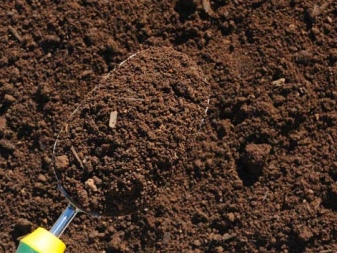
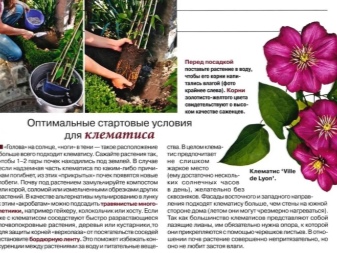
The process of preparing a pit for rooting seedlings occurs in a specific order.
- A hole is dug with a depth, width and length of 60 cm.With multiple single-row planting, a distance of 1 m is maintained between individual plants.
- The bottom of the prepared pit is laid out with drainage. The height of the backfill from a mixture of coarse sand and gravel is about 1/4 or 1/3 of the depth. Further, up to half of the volume is covered with fertile soil. The pit prepared for planting is watered with 1 bucket of water.
- The seedling is placed in the center of the recess at such a level that its lower pair of buds is 8 cm below the upper soil layer. The pit is covered with fertile soil. The surface is compacted, the seedling is watered.
- If the plant is planted in a single copy, it is recommended to immediately dig in the selected support with it. This will facilitate the correct formation of the lashes in the future.
- To preserve the natural moisture in the root zone, you need to take care of filling this area with chopped bark or shavings. Mulching will protect the bushes planted in a sunny area from drought.
Overview of species and the best varieties
There are a large number of types of clematis of the third pruning group. Let's take a look at some of them.
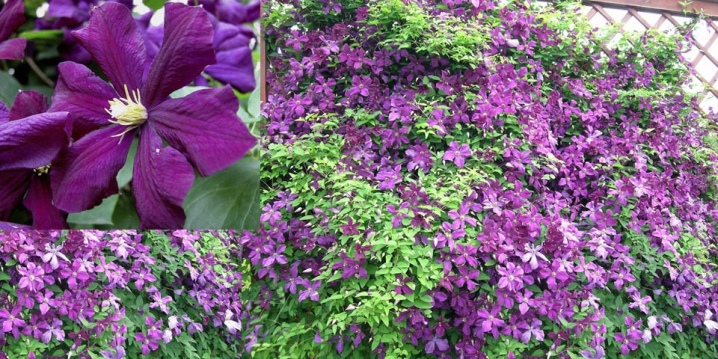
Clematis Jacqueman
This is perhaps the most spectacular type of the third group of clematis. It includes tall varieties up to six meters long. Flowers are odorless, of the most varied colors, very large, up to 20 cm in diameter. It is worth describing the best varieties.
The Blue Flame is truly the king of the clematis. This is one of the most unpretentious and winter-hardy varieties, growing well from the Urals to the Moscow region. It blooms from July to September with gorgeous huge bright blue-purple flowers.







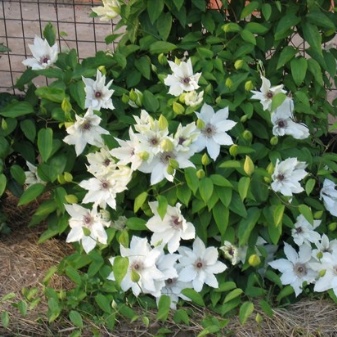
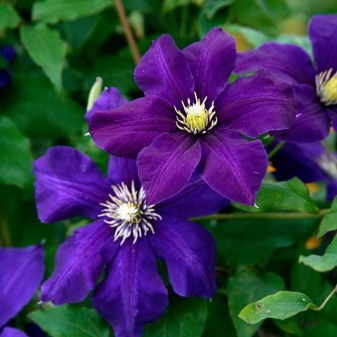

Clematis Viticella
This group brings together abundantly flowering and fast growing varieties. The flowers are large, red and purple. This group includes many varieties.
"Ville de Lyon" - as the name implies, this variety is bred in France. It blooms very profusely with medium-sized (up to 13 cm) carmine-red flowers. Shoots up to 3 meters long. The variety is prone to fading.
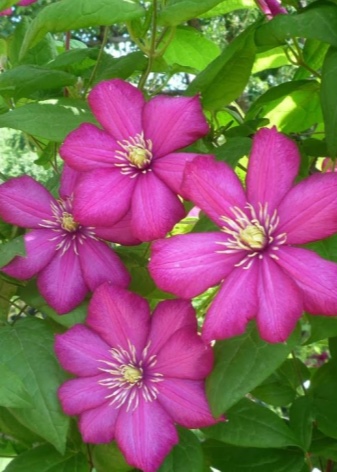

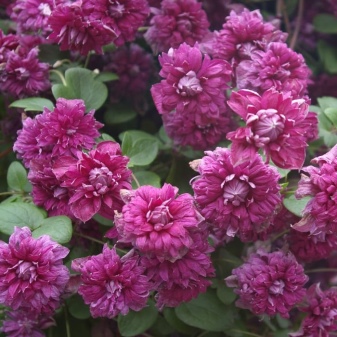
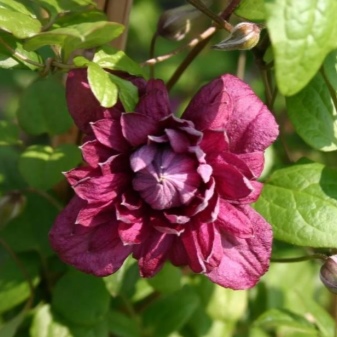


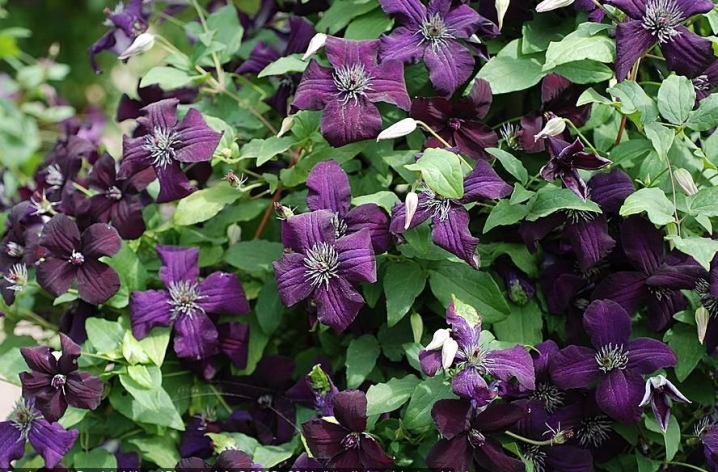

Clematis Integrifolia
These are herbaceous shrubs, up to one and a half meters high. They do not have the ability to cling to a support, so they require garters or growing as ground covers. The flowers are drooping, bell-shaped. All clematis of this species are quite unpretentious, withstand severe frosts even without shelter. This group includes a wide variety of varieties.
"Alyonushka" is a very unusual variety of clematis with pink bell flowers with beautifully curved wavy petals. It blooms very profusely, is not afraid of severe frosts, and is unpretentious.

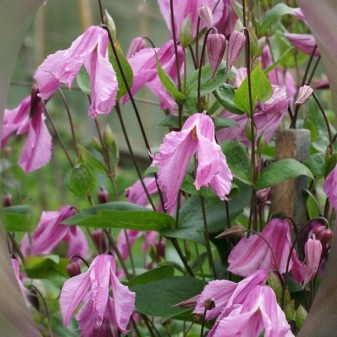
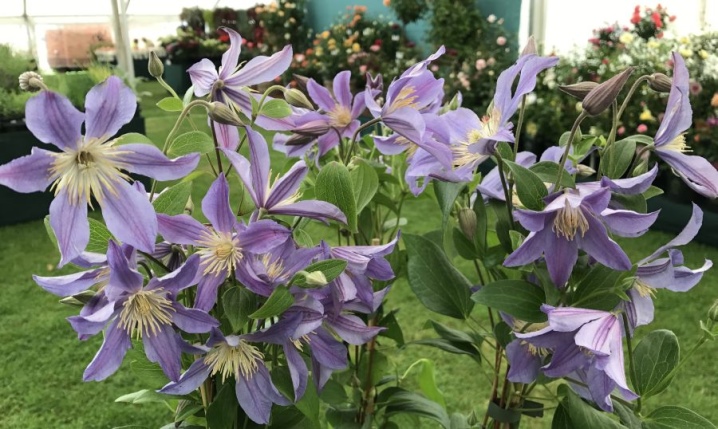
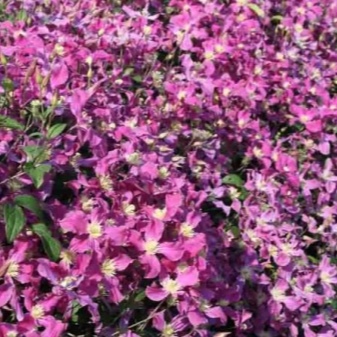
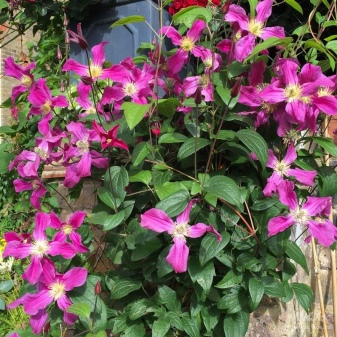
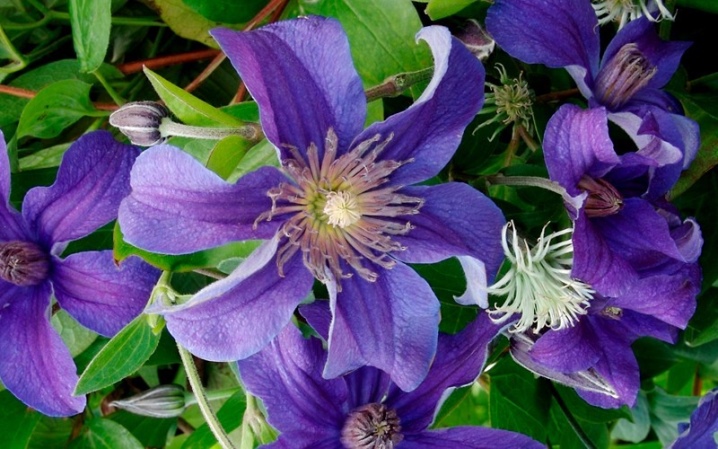


Small-flowered clematis
This group includes a wide variety of varieties - both creeping and tall with various colors of fragrant flowers. All clematis of this group are unpretentious, do not require shelter for the winter, and are easily propagated by seeds. This group also includes different varieties.
"Clematis straight" - so named because of the vertical arrangement of the buds. It is a shrub clematis reaching only 1 meter in height. The smell of its white flowers is sharp, sometimes even unpleasant.
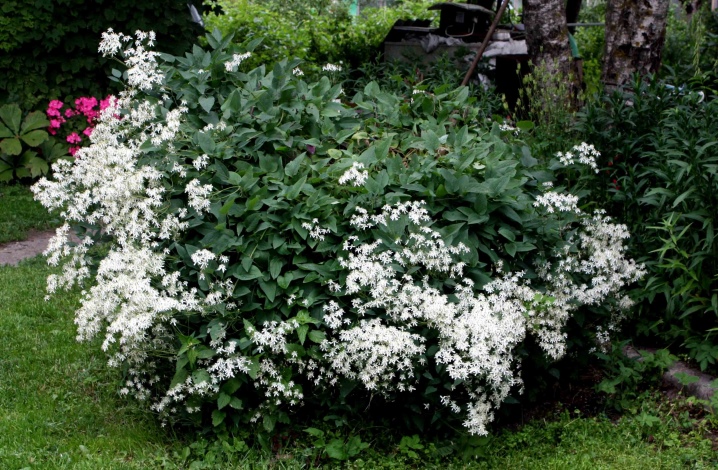


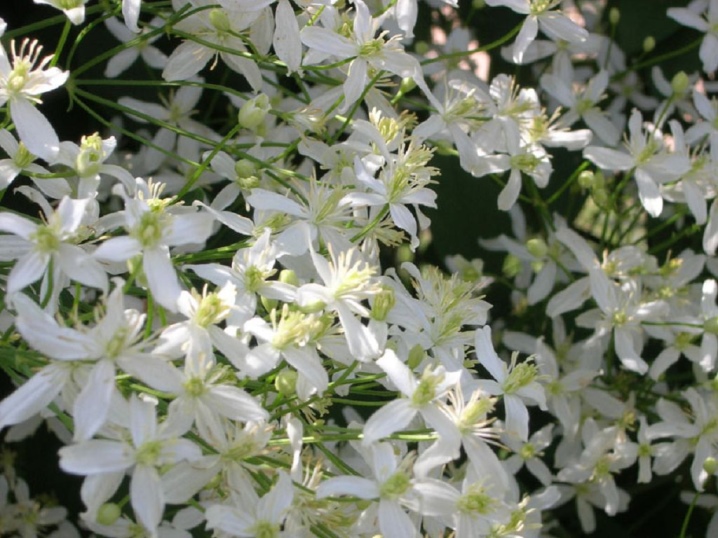
Texensis
These clematis have amazingly shaped drooping flowers, similar to tulips. Among the most common varieties, several are worth highlighting.
"Duchess of Albany" - bright pink flowers with a raspberry strip in the middle of each petal. He prefers sunny or semi-shaded places, takes root for a long time. It requires very good shelter for the winter.
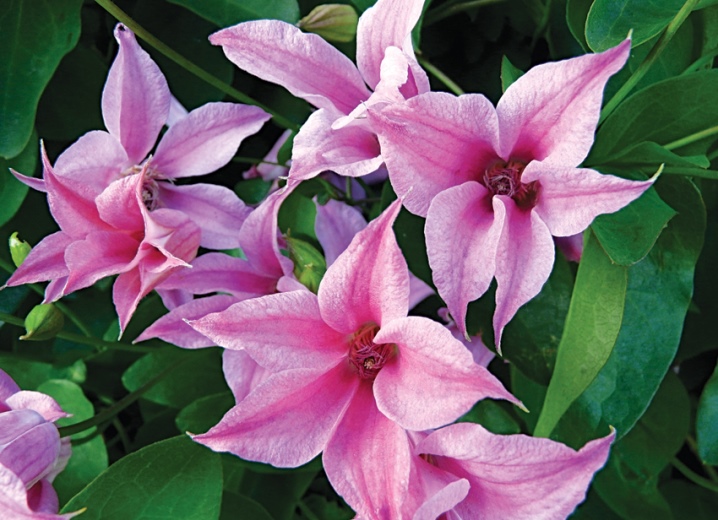


Reproduction
To create beautiful flower arrangements in your personal plot, clematis are propagated. There are several ways to propagate this garden plant.
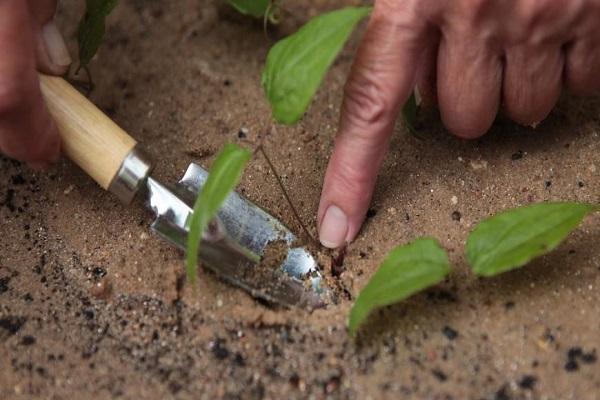
Seeds
According to gardeners, healthy, full-fledged plants grow from seeds that develop and grow quickly.
- Seed material is sent to the cold for 1.5-2 hours.
- After the seeds are removed from the freezer, they are kept warm for 2-3 hours. Such activities are repeated twice, thereby hardening and disinfecting the planting material.
- Then the seeds are kept for 2 hours in growth-stimulating preparations and dried.
- All planting material is laid out in a small container, which is covered with a jar or film.
Important! Until the seeds germinate, the small greenhouse is ventilated every 2-3 days. When the first shoots appear, the seeds are planted in open ground
Dividing the bush
The easiest way to propagate clematis is by dividing the bushes. In this way, plants are propagated and rejuvenated that have reached the age of 4-5 years, in which the root system is formed.

The liana is buried on one side, and the young shoots together with the rhizome are carefully separated from the mother plant with a knife. Separated shoots are planted in open ground as independent plants.
Cuttings
By cuttings, strong, viable seedlings are obtained that can bloom from the first year of life in the open field.
On an adult liana, the strongest branches are chosen, which are cut off. From one branch of clematis, several cuttings are obtained at once. The main thing is that there are 2-3 vegetative buds on each seedling.
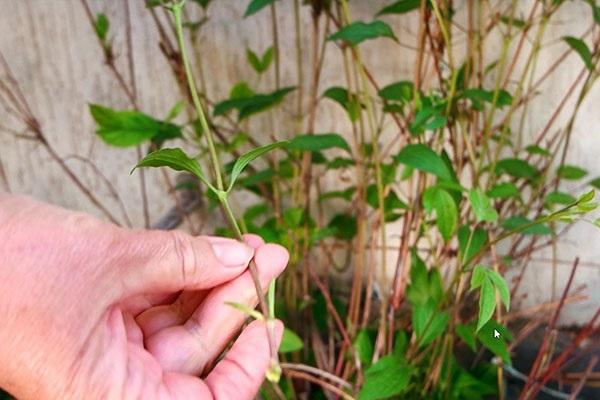
The cuttings are treated with growth stimulants and planted in pots with fertile soil. The planted plants are moistened and covered with foil or glass.
When the first roots are formed in the cuttings, they are kept for another 3-4 weeks and planted in open ground.
Description of Clematis Multi Blue
Clematis of this variety belongs to liana-like plants, the shoots of which become lignified over time. Its green lashes grow up to 2-2.5 m during the season. The shoots of the first year are thin and flexible, but at the same time rather fragile. This must be taken into account when tying the vines to the supports. As it grows, the shoots become denser and brown, remaining flexible.
With the onset of heat, leaves immediately appear, which take an elongated shape with a pointed tip. The foliage is dark green. The leaves are large, up to 10 cm long, matte, petiolate.
Bright blue flowers with a purple tint are formed on the shoots that have grown in the past and current year. Clematis Multi Blue belongs to the Patens group. These varieties always have flowers of a double or semi-double type.
Multi Blue has a lot of petals, they are located in two circles. The outer ones have a rounded-oblong shape, veins and pointed tips. Petals are flat, slightly pubescent on the underside. Their number can be variable, from 6 to 8 pieces.
The inner circle of the flower has several rows of petals.They differ from the first in shape and size, which emphasize the magnificence and originality of this variety. The short petals, shaped like a lancet or needles, are positioned vertically upward. Most often, the central petals are light blue, but some variations from white to pale pink are possible.
In the center are stamens, colored in different tones of light green, yellow, or white, depending on the stage of formation and opening of the bud. A flowering bush of hybrid clematis of the Multi Blue variety is shown in the photo.
Interesting fact!
Multi Blue is considered a hybrid clematis. For this reason, the flower of the vine is quite large - up to 18-20 cm in diameter.
The flowering period for Clematis Multi Blue begins quite early. In the first half of May, the first buds form and bloom on clematis bushes. After the first period of flowering, when the shoots of the current year are growing, the second stage of exuberant flowering begins. In the absence of negative temperatures, it can last from May to September, giving flower growers the opportunity to enjoy this beauty every day.
The root system of Clematis Multi Blue is located close to the soil surface, which is very different from other varieties. The shrub forms many small, rather thin roots. Therefore, when growing Clematis Multi Blue, you cannot loosen the soil under the bushes so as not to destroy the plant. Instead of loosening, you can only mulch the soil.
Information about the frost resistance of Clematis Multi Blue is contradictory. Some sources claim high resistance to low temperatures. Others describe it as a shrub with low frost resistance. The hybrid is resistant to frost down to -15˚С, but may not withstand long-term frosts. However, according to the reviews of florists, the Multi Blue variety of clematis successfully survives short-term temperature drops of –30˚ – 34˚С.
On a note!
This variety of clematis can be successfully grown on balconies. They decorate hedges, fences. In the flowerbed, it goes well with yellow, white annuals and some low shrubs, conifers.
Based on the description, Clematis Multi Blue belongs to the second pruning group. Last year's shoots are removed immediately after the end of the first wave of flowering. For the winter, all vines are cut at a height of 1-1.2 m.
"Pros and cons"
Before planting Clematis Multi Blue on your site, you should familiarize yourself with its advantages and disadvantages in order to fully appreciate whether this wondrous plant can grow and delight you with its lush and picturesque flowering. The obvious advantages of this variety can be safely attributed:
- decorative characteristics of Clematis Multi Blue;
- compactness of vines;
- unpretentiousness to growing conditions;
- disease resistance;
- sufficiently high frost resistance;
- very exuberant and beautiful bloom;
- long flowering period.
Of the minuses, only the need to prepare and cover the bush for winter can be noted.





